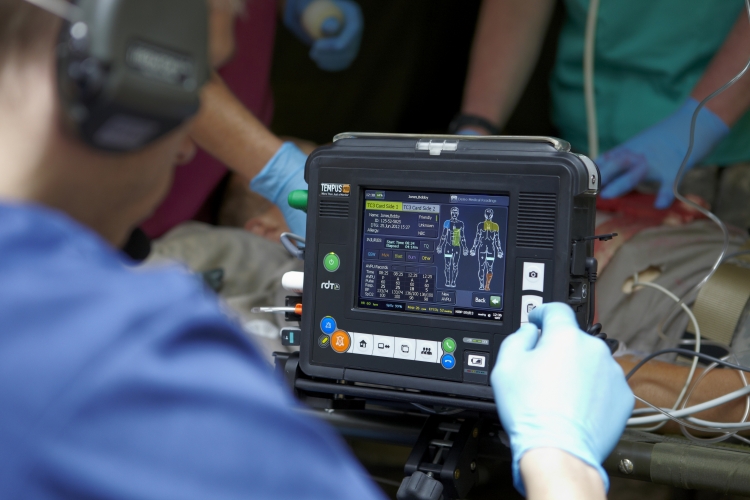Can satellite-based telemedicine offer real benefits to medical practitioners working in remote locations? With the support of the European Space Agency, a recent ARTES project set out to try to answer that question. The goal was to see whether portable satcom technology could be successfully deployed for the transmission of key medical data from remote locations to doctors and healthcare technicians who provide medical support at a long distance in emergencies.
Tempus Pro provides all the integrated features and capabilities expected in a market-leading vital signs monitor with extensive two-way communications, packaged in a compact, robust, highly portable unit designed to meet users immediate and evolving needs and budgets, with the ability to add advanced capabilities post-purchase.
The unit, which was developed by UK-based Remote Diagnostic Technologies (RDT), has GSM (3G), GPS, WiFi, Bluetooth and Ethernet connectivity, and can use VSAT to exchange voice, video, medical data and GPS positioning. Various external devices can be connected such as contact temperature sensors, electrocardiogram leads and a USB ultrasound probe.
The ability to share all vital signs and patient care record data including graphical and tabular trends, twelve-lead ECG recordings and images from the integral camera in real time increases situational awareness and allows for better-informed treatment and transport decisions to be made.
Teaming up with the French firm International SOS, RDT deployed the device in real-life situations, under rugged conditions, over a six-week period in Algeria and Nigeria. International SOS provides medical and security services for businesses and large organisations through an extensive network of offices across 35 countries, staffed with clinical personnel. They provide direct medical care, supported by a network of assistance centres staffed by doctors, nurses and specialist call handlers.
Injury locations are entered via a touchscreen interface
“Initially, participants were slightly sceptical of the idea of telemedicine,” observed Dr Arnaud Derossi of International SoS. “However, they were quickly won over by the Tempus Pro. By the end of the six-week period, they were extremely positive about the possibilities it offers. “The key to the unit’s success is that it is a fully functional, hospital-grade vital signs monitor. On top of that, it offers very useful communications facilities.”
International SoS is active typically in locations served by poor roads with security challenges, and medical evacuations by air can be costly and problematic to arrange. “Often it is simply a matter of a medical practitioner in the field wanting to get a second opinion from a colleague. At times, a remote consult can even save an unnecessary medical evacuation,” added Derossi.
The RDT team has observed that it takes less than an hour for an experienced medical professional to learn the basic functions.
For non-medical users, RDT offers the Tempus IC, which was developed during an earlier ARTES project that ran from 2006 to 2008. “The Tempus IC has been a very successful product for RDT in the non-medical user markets,” says RDT’s Integration and Applications Manager, Mark Williams.
Tempus IC is regularly used by non-medical experts, such as pilots, crew and key staff to transmit the medical data routinely collected in an ER – such as blood pressure, cardiac condition, pulse and respiration – to 24/7 ground-based doctors from aircraft, yachts and remote locations. According to Williams, there is great interest in the new unit Tempus Pro, which is designed expressly for medical professionals, both in the civilian and in the military world.
“What made the Amazon project remarkable,” says ESA Technical Officer Arnaud Runge, “was that it didn’t concern just the development of a prototype – the Tempus Pro is a fully-certified medical device which has been validated with an end-to-end operational service.”
“ESA is highly active in health and life sciences, supporting some such 160 projects during the past 10 years, easily half of which have been telemedicine applications.”
Related Pages





